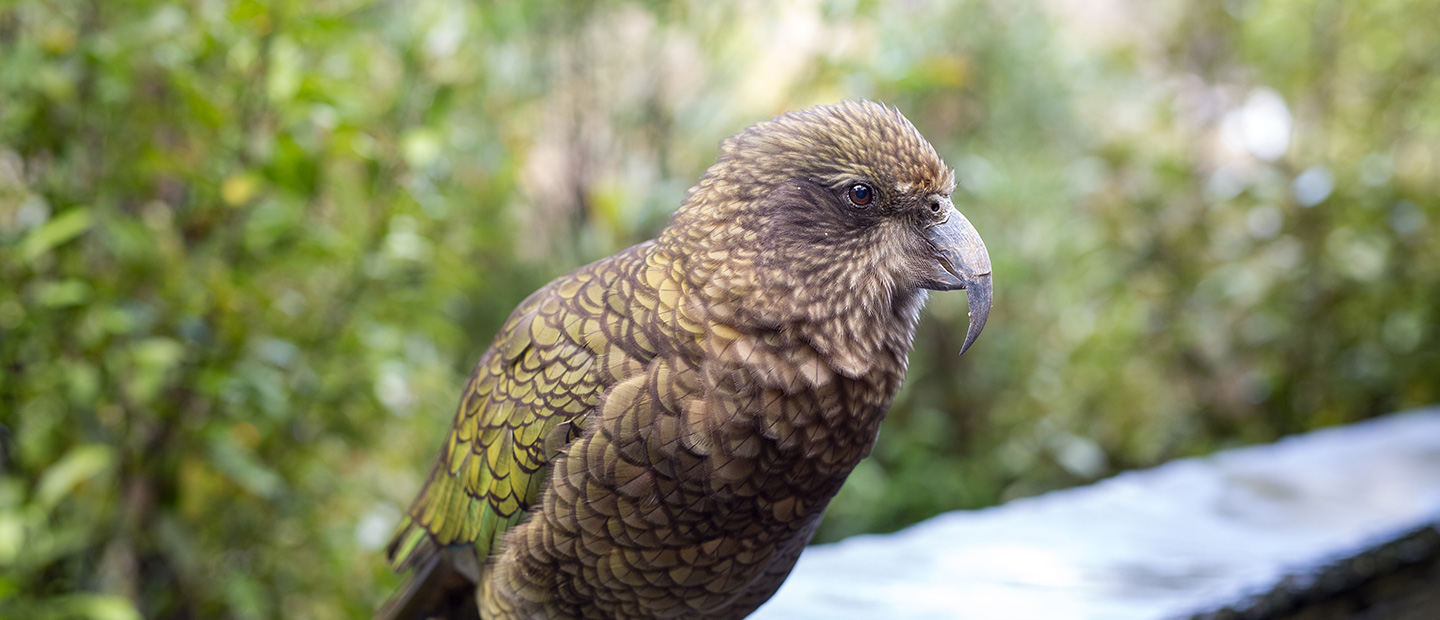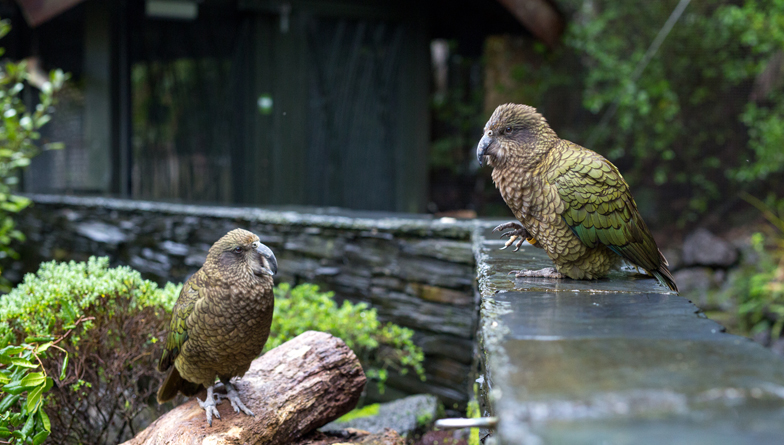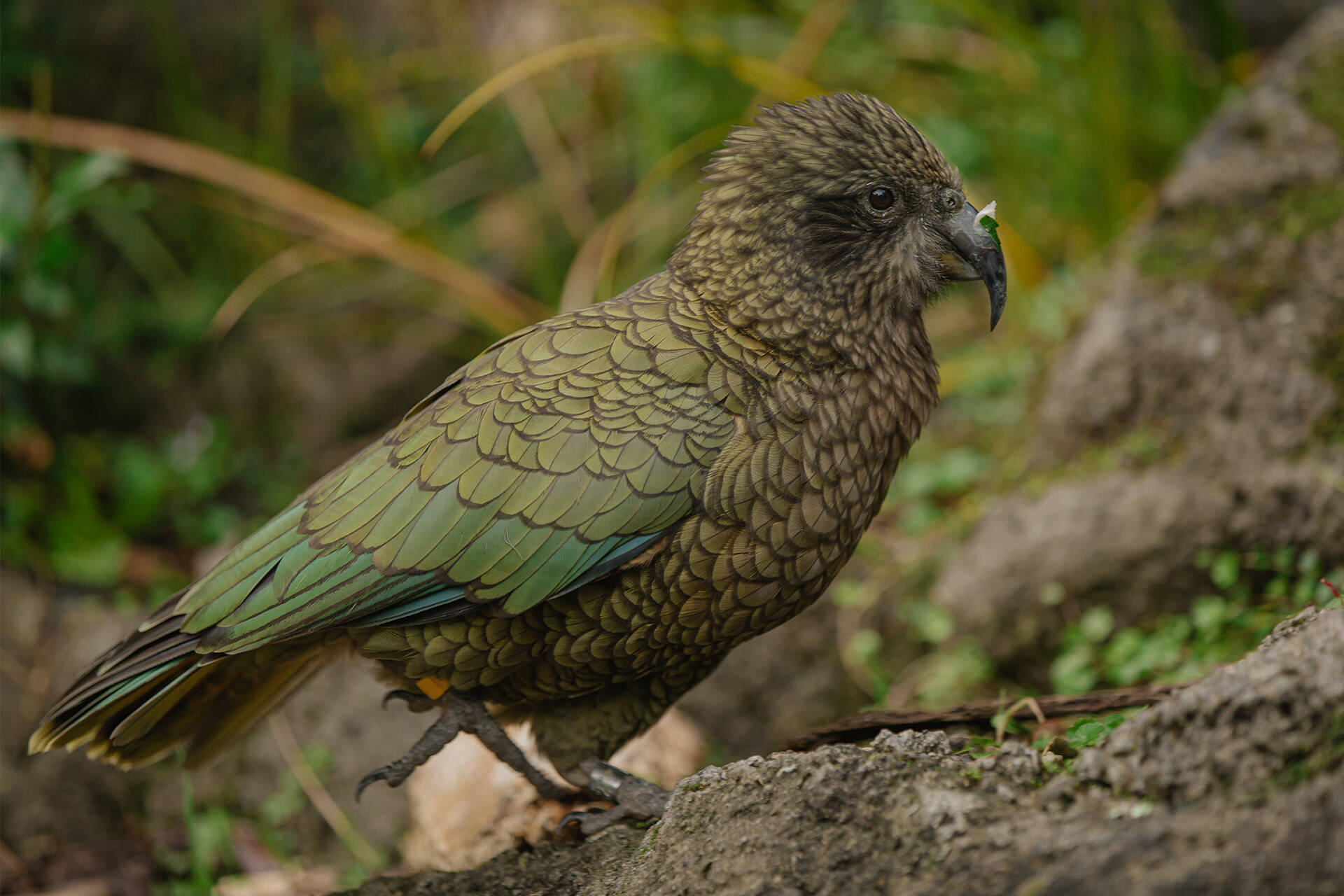At the Zoo:
The circus at the Zoo
The Zoo’s kea breeding pair can be found in the High Country habitat in Te Wao Nui.
Between the trees and the snow
Kea are found in the alpine habitats of the South Island. At the Zoo their High Country habitat maintains a relatively low ambient temperature, being shaded from the midday sun by the adjacent forest. Rocky outcrops give the kea natural vantage points for observing the activity in their aviary. The plants of the aviary are a mixture of hardy sub-alpine species and other native species chosen as analogues to those alpine plants which can’t survive in Auckland’s climate.
Grubs and shrubs
In alpine environments in the wild, food is not always abundant or easy to find. Being flexible with their diet is helpful for wild kea, so they can eat whatever is available at the time. They are omnivorous, eating berries, seeds, flowers and other plant matter as well as insects, worms, occasional carrion and eggs. At the Zoo the kea enjoy a daily diet of chopped fruit and veg, sprouted seeds and nutritionally-balanced pellets. The diet is divided between ‘hoppers’ throughout the habitat – special food dishes with lids which the kea have learned to stand on to open(like a pedal-bin!). The kea also get fruit ‘stabbed’ onto branches or hidden inside enrichment items and in the summer, giant fruity popsicles. If they’re very lucky they might get an occasional huhu grub or two.
Keeping the mind sharp
Keepers regularly provide these clever parrots with behavioural enrichment. Hiding their kai inside homemade puzzles, toys and items to problem solve and manipulate keeps their brains ticking. Because they are such good learners the bird keepers are always thinking of new ways to test them and their skills!
Positive reinforcement training also keep kea minds active. Keepers train useful behaviours for husbandry and health checks, like hopping into a crate,stepping onto the weighing scales or even lifting up a foot to check the underside of it. In this way, we can check the kea are in tip-top shape. For every behaviour done right, the keepers will give a tasty reinforcement. They seem to especially like peanuts!




